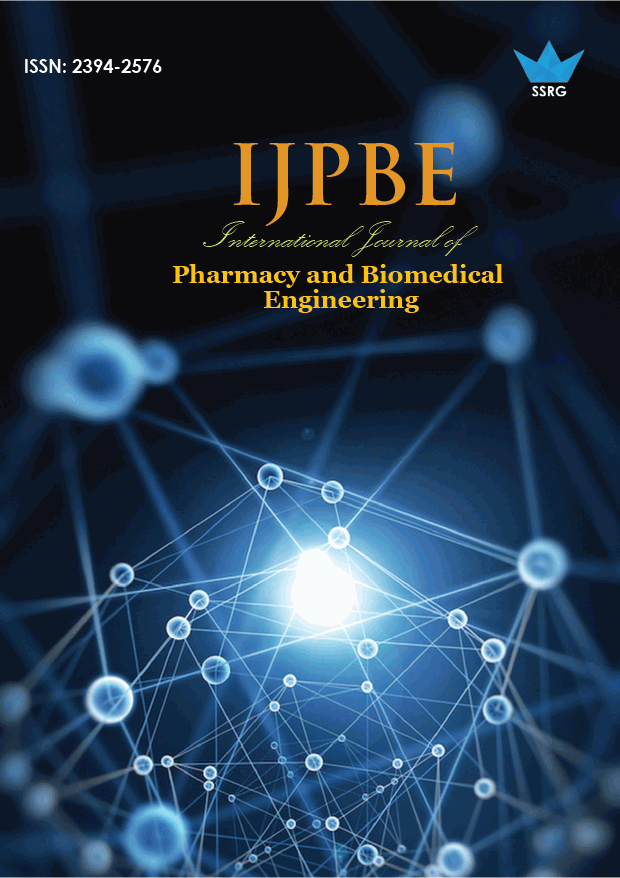Anti Microbial Fabrics Manufacturing using the BenzalKonium Chloride in Antimicrobial Fabric Finishing

| International Journal of Pharmacy and Biomedical Engineering |
| © 2014 by SSRG - IJPBE Journal |
| Volume 1 Issue 1 |
| Year of Publication : 2014 |
| Authors : Dr.D.Mathiyalagan |
How to Cite?
Dr.D.Mathiyalagan, "Anti Microbial Fabrics Manufacturing using the BenzalKonium Chloride in Antimicrobial Fabric Finishing," SSRG International Journal of Pharmacy and Biomedical Engineering, vol. 1, no. 1, pp. 10-12, 2014. Crossref, https://doi.org/10.14445/23942576/IJPBE-V1I1P104
Abstract:
Antibacterial fabric manufacturing is a challenging task in textile industries. The fabric is the right living place for the bacteria, and it acts as a medium between the human and bacteria. The textile industries are concentrated more on antibacterial fabric manufacturing because it will increase the quality of fabrics and increase product sales. This paper proposes the benzalkonium chloride-based antibacterial fabric manufacturing in textile industries. This kind of antimicrobial agent provides better protection against bacteria for a long time. And also, it does not spoil the quality of fabrics like shrinking and tearing.
Keywords:
Textile, Benzalkonium chloride, Antimicrobial agents, Antibiotic fabrics
References:
[1] Badmaevet al., (1993), "Honey Impregnated Gauze Versus Polyurethane Film in the Treatment of Burns – a Prospective Randomized Study”, Br J. Plastic Surgery, Vol. 46, pp. 322- 323.
[2] Subrahmanyam M., 1991, “Topical Application of Honey in Treatment of Burns”, Br J. Plastic Surgery, Vol. 78(4), pp. 496-8.
[3] Gescher et al, 2005, “Honey as a Natural Resistor for the Wounds”,J.Food Prot., Vol. 47, pp.815- 817.
[4] Thilagavathi G. et al., 2007, “Microencapsulation of Herbal Extracts for Microbial Resistance in Healthcare Textiles”, Indian Journal of Fibre and Textile Research, Vol. 32, pp.351- 354.
[5] Huhtanen C N et al., 1981, “Incidence of Clostridium Botulinum Spores in Honey”, J. Food Prot., Vol. 44, pp.812- 814.
[6] Thomas, A. W., &Frieden, A., 1923, “The gelatintannin reaction”, Industrial and Engineering Chemistry, 15, 839-41.
[7] White JW., 1975, “Composition of honey Honey: A comprehensive survey”, London: Heineman, pp.157-220.

 10.14445/23942576/IJPBE-V1I1P104
10.14445/23942576/IJPBE-V1I1P104